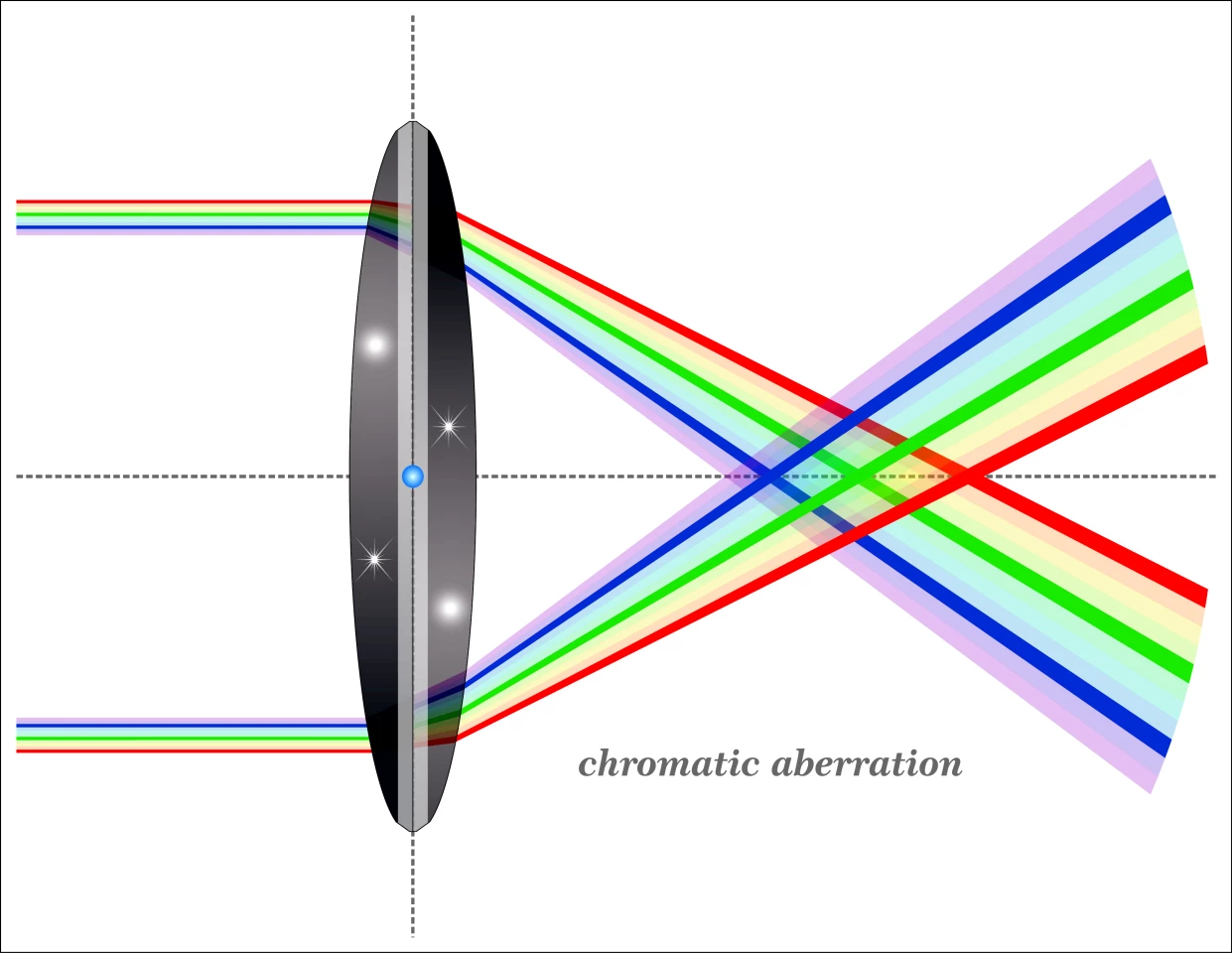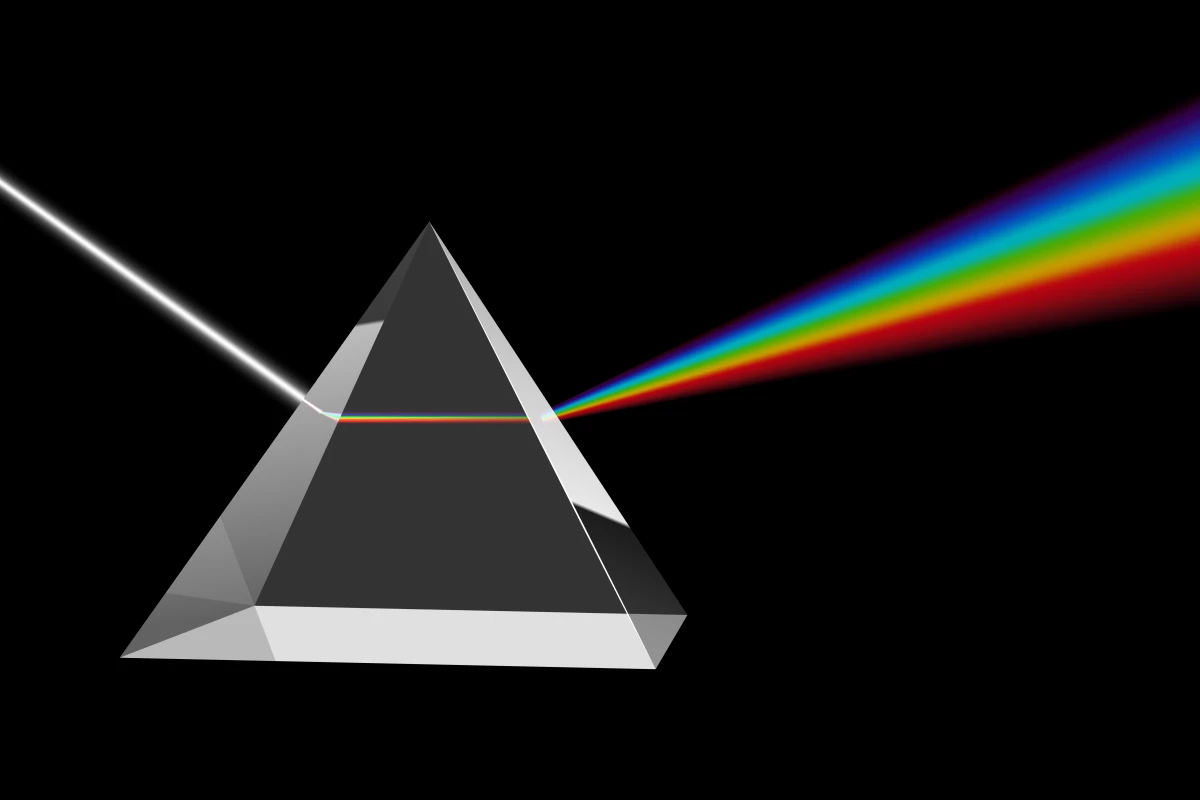Light travels at different speeds based on the medium it passes through. For example, in a vacuum, it travels at 3.0 × 10^8 m/s in a straight line. But when directed towards glass, air, diamond, water, and other mediums, it moves slower. The refractive index is used to show the speed of light in a vacuum in relation to the speed of light in a particular medium. The higher the measure, the slower the light moves in the given medium.
Lenses and The Refraction of Light
If light enters a new medium at a right angle to the surface, it changes its speed but not its direction. But if it moves through different mediums at different angles, it changes both speed and direction. Lenses operate based on this. These are mediums made of glass and plastic, which take on plane-like or spherical shapes. Lenses can either be convex/ converging or concave/ diverging.
Convex lenses take parallel light rays from distant objects and bend them to converge at a single point known as the focal point. The distance from the focal point to the lens is known as the focal length, as shown below:

On the other hand, concave lenses bend parallel rays to spread out such that they appear to be coming from a point in front of the lenses. This focal distance is thus expressed in negative units.

Most telescopes today, and many from the early days, relied on lenses for gathering light that was unattainable by the human eye. The telescopes used two lenses, the objective lens (convex) and the eyepiece (concave). Thanks to the refracting telescope's structure, lenses could focus the light and make distant objects look nearer, brighter, and bigger. The longer the focal length, the larger the image would be. Moreover, the light gathering ability of the telescope affected how bright the image would be.
The Effect of Chromatic Aberration
While lenses come with some defects (e.g., glass absorbs UV light), chromatic aberration seems to take center stage as far as their limitations go. Why so? Lenses refract light to meet at a focal point. However, light comprises various wavelengths that refract at different speeds and directions. It’s difficult to ensure that the light meets at one focal point, thus resulting in darker or lighter parts of the resultant image, creating a blur.
Chromatic aberration results from the dispersion of visible light into different wavelengths and can best be shown by passing white light through a glass prism.

For example, in the diagram above, it’s clear that indigo refracts at a much higher level than green. You can expect the same when passing light through lenses. One lens cannot focus all these wavelengths at a single point, which paves the way for chromatic aberration. As different light colors pass through the lens, they will refract at different speeds and directions, and the image will have colored edges. That’s why you need to combine different lenses from a trusted optical lenses supplier. You can also invest in lenses like plano-convex and biconvex lenses, which minimize spherical aberration.
Types of Chromatic Aberration
Aberration can either be axial (longitudinal) or lateral (transverse). Axial aberration occurs when different wavelengths disperse from the lens at different horizontal points. Stopping down the aperture often resolves this issue. On the other hand, lateral aberration occurs when different wavelengths focus in various positions on the same focal plane.

Resolving Chromatic Aberration
Since no one lens can focus different light wavelengths at a single point, there’s a need to use multiple convex and concave lenses made from different types of glass. It ensures that the lenses cater to all dispersion levels and can reduce the amount of chromatic aberration. Those that correct two wavelengths are known as achromatic lenses, and those that correct three are known as apochromatic lenses.
Achromatic lenses comprise glasses of different refraction indexes to create an achromatic doublet that minimizes the chromatic aberration. Some systems also include low dispersion glass to counter the light dispersion. Apochromatic lenses feature three glass types and are often used in complex systems where clarity is important.
While it is impossible to eliminate the problem of chromatic aberration in lenses, it’s possible to minimize its effects by investing in achromatic or apochromatic lenses. It’s also important to understand how different lenses operate. For example, biconvex lenses keep the spherical aberration at a minimum value by canceling or minimizing distortion. Plano-convex lenses' asymmetry reduces their spherical aberration, more so when the objects are at infinity. It’s possible to create a system that has the least aberration to ensure the best clarity.







